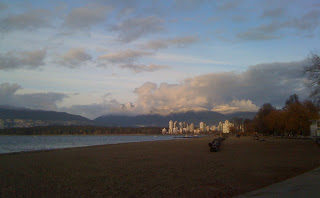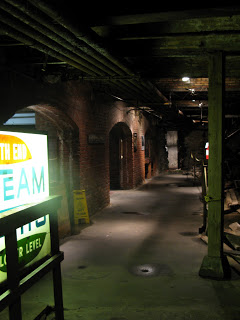
Joseph Boyden’s novel The Orenda, which made the Scotiabank Giller Prize long list this year, is another masterpiece that explores the inevitable changes, both palpable and subtle, brought on by the collision of two very different societies. Unlike Three Day Road and Through Black Spruce, which both take place in the last 100 years, The Orenda is set in 17th century Canada. It was the era when European settlers, traders, and missionaries were making themselves known, and the Native populations, with resistance and curiosity, were left to deal with the consequences.
One of the most fascinating things about Boyden’s talent is his ability to narrate authentically from varied perspectives. In this case, he has developed three characters to tell the story of The Orenda: an important Huron war leader named Bird; the young Iroquois girl Snow Falls, whom he has kidnapped; and the Jesuit missionary Christophe, referred to as Christophe Crow or Crow (for his black robe as much as for his uselessness) by the Huron people.
It is a true epic, both in its proportions and other literary elements, such as beginning in medias res (the middle of the action). The war between the Iroquois and the Huron is already deeply entrenched, with death tolls, tortures, and resentments building up on each side. The story here begins with the Huron advantage over the Iroquois – and since Bird has lost his wife and daughters to the war, he steals Snow Falls to raise as his own. This recalls the epic story of the Trojan War as told in The Iliad, where Helen is stolen from Menelaus, the king of Sparta. This is the catalyst for the war between the Trojans and the Greeks, and in the same way, the Iroquois are incensed by the capture of Snow Falls. The violence in this story is also reminiscent of Homer’s epic; bloody descriptions of war and torture are par for the course in The Orenda.
In Christophe’s point of view, we see the frustrations of coming to this new land of the sauvages, but also the dedication to spreading the word of God. He reminds me of Christopher Marlowe in Heart of Darkness, by name of course, but also because Marlowe similarly navigates his way through unknown lands that lack civilization, but are full of mystery, wonder, and violence. Many times throughout the novel, Christophe leaves himself in the hands of God, understanding that whatever torment awaits him is meant to be. His character is a testament to the will of the missionaries, many of whom gained little ground in converting the Natives, but who remained, fought a war, and suffered greatly too. This is one of the many strengths of the novel; it does not dwell on one-sided hardships, but explores various perspectives. There are many harrowing and tragic situations, but very little judgment.
From Bird we get the voice of the Huron people. It is a voice that also expounds frustration and the desperate need to preserve a culture while keeping and strengthening trade relationships. Bird realizes that some of the tools and implements from foreigners have made their lives easier. But he also understands the tragedies brought by new disease and access to ammunition and the “shining wood”. He spends much of his time preparing for long journeys involving trade with the Europeans, or involving warfare with the Iroquois. He is a war chief who is very important to the survival of his people.
Snow Falls provides a foil for both Bird and Christophe, because she too suffers as an outsider who understands the difficult losses associated with war. The Hurons have killed her family, echoing Bird’s loss, and she must live among these people who are her enemy. Snow Falls never forgets her roots, but is also forced to survive and adapt to a new environment, like Christophe. Although this relationship breaks down throughout the novel, the two characters are connected through their “otherness”, and through religion (albeit Snow Falls is a gifted actress in this regard, and uses it to her advantage when necessary). She does find her own path and successes amongst the Huron, but ends up back where she began, in her special way.
Indeed, this is a novel of cycles – the cycle of life and death, the cycle of birth and renewal, the cycle of the seasons, and the cycle of returning home, whether it is physically or spiritually. The Orenda is also a novel of “threes”, a number Boyden has used thematically before in Three Day Road. In this new novel, there are three sides: the Huron, the Iroquois, and the Europeans, although the Europeans do eventually choose sides, the cultural conflict is always there. There are also the Three Sisters that are planted and harvested each year by the Hurons, three women who are simultaneously pregnant, and three Iroquois taken prisoner. On the Christian side there are three missionaries, three converts, and the Holy Trinity, the Father, the Son, and the Holy Spirit. It is a number that crosses cultural boundaries.
The climax of the story takes place during the final battle between the Iroquois and the Hurons. It is likely based on the true events of 1649, when the remaining Huron were forced to leave the safety of their palisades to take shelter on an island. Boyden demonstrates his incredible power for description during these final scenes; as a reader you are sitting amongst the Huron, fearful, and watching the world fall apart before your eyes.
Amidst all the blood, torture, and warfare (and it gets very gruesome in parts) this is a story about relationships and love. Love for your people, for the land, for your beliefs, for your family, and for your way of life. It is a story about how the soul (the orenda) is never lost; the Hurons demonstrated an unparalleled reverence for their dead (described so beautifully during the Feast of the Dead) and believed strongly in reuniting with lost friends and family in the afterlife. The fear of not meeting your family again was one of the major barriers to changing the Native belief system. It was seen as a betrayal that would last an eternity.
Boyden has once again captured the fine intricacies of cultural conflict, so integral to the shaping of Canadian society. He is a dedicated researcher, who is committed to the whole history and also to his craft. In The Orenda, Boyden intimately understands and reshapes the contradictions, the ironies, and the relationships that emerged during this time.
Other Canadian historical novels worth reading:
Three Day Road by Joseph Boyden
Through Black Spruce by Joseph Boyden
Kanata by Don Gillmor
Alias Grace by Margaret Atwood
The Book of Negroes by Lawrence Hill
Other historical novels worth reading:
The Headmaster’s Wager by Vincent Lam
Snow Flower and the Secret Fan by Lisa See
Suite Francaise by Irene Nemirovsky
A Thousand Splendid Suns by Khaled Hosseini
The Kite Runner by Khaled Hosseini
The Josephine B Series by Sandra Gulland
Please share other historical novels you enjoyed and/or your opinion on The Orenda. I would love to hear your thoughts!















